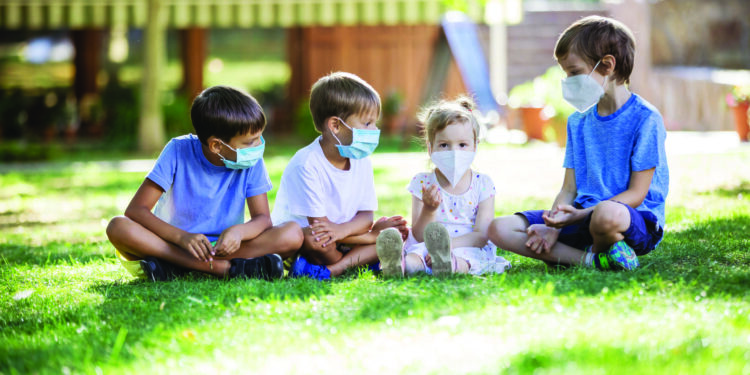By Michael Hallisey
Sun, music, nature walks, arts and crafts — these are the staples from which every summer camp memory is made. They are accentuated by the friendships and smiles that accompany them. That, my friend, has not changed.
The kids today just wear masks, but Andrew Katz, director of youth services at Albany Jewish Community Center on Whitehall Road, said the smiles are still there.
“You can still kind of see they’re smiling,” he said, “with their cheekbones raised and their eyebrows up. There’s still some face recognition there.”
Albany JCC is just one of many camps across the Capital District that are using last summer’s pandemic experience as a learning tool. Kids are broken up into small groups, or pods. They wear masks. They’re mostly outside. And, sharing isn’t necessarily caring.
In February, the American Camp Association announced the release of an independent study on last year’s summer camp experience. Led by Dr. Helen Suh of Tufts University with support from Maine Medical and Environmental Health & Engineering, the study offered critical information on the pediatric experience in child congregate settings, such as camps, schools, and community and recreation centers.
The ACA worked with the YMCA of the USA to provide educational resources to both day and overnight camps, state and local health departments, guardians and campers. The resources were developed last year, and revised for this summer, by an independent expert panel coordinated by Environmental Health & Engineering, Inc., a Boston-based consulting firm specializing in environmental health.
“This research illustrates the success of summer camps as stewards of public health in pandemic response and management,” said Tom Rosenberg, president and CEO of ACA. “Since April 2020, ACA has continuously focused on the development of responsible guidelines for day and overnight camps on behalf of the out-of-school community.”
ACA guidelines are often used as a resource to protect the estimated 26 million children attending camp, as well as those taking care of your children while they are there. For the association, the study demonstrated how their efforts created a safe and successful year in the sun by mitigating the spread of COVID-19.
“The low incidence rates are comparable to similar studies of the experience of children in school and day care settings,” said Dr. Suh.
A recent ACA study of 486 camps serving 90,000 campers reported only 30 campers had confirmed COVID-19 cases in 2020.
“The science demonstrates that camps that have implemented strict, layered mitigation strategies — including masking, cohorting, physical distancing, cleaning and maintaining healthy facilities, proper handwashing, and respiratory etiquette — have been able to safely operate in person,” Rosenberg said.
As the pandemic continues to evolve and we learn more from researchers and scientists, the ACA will continually update its guidelines with the latest and most accurate scientific research and practices.
“Summer camps provide the optimal context for kids to practice social-emotional learning. After such an isolating and traumatic year of disruption and loss, the SEL outcomes that result from camp experiences will help young people prepare to thrive in school this fall,” Rosenberg said.
Albany JCC has transformed the summer camp experience of the past, when children would spend their days at Camp Olam off of Grafton Lake. All the staples — including the swimming and the nature trails — have been brought back home to Albany, in some shape or form. Swimming can happen at the pool off Whitehall Road, and trails have been cut into the land.
“Every week, we do a Shabbat,” Katz said. “When we started the summer [last year], we just had it at our pavilion. Then, our staff constructed a fire pit, and we did it around a campfire like we did at our camps.”
Katz said it’s part of an effort in utilizing as much outdoor space as they can use.
The Troy neighborhood in which The Arts Center of the Capital Region resides doesn’t conjure the serenity of the Adirondacks, but it possesses the tools to cultivate creativity in a child.
Nicole Peterson, director of external relations at the center, explained how there’s still much to explore in Troy, as well as create. One such class the center will provide is called “Explore Troy,” where children will be encouraged to navigate, explore and discover the great city. They’ll also take part in transforming the studio into an “interactive mini-city,” where they will construct buildings, plant trees, build a park or catch the trolley to the Farmers’ Market.
“Everyone is still being very cautious, but we’re all thrilled to have people back in our spaces,” said Peterson, who added the center’s gallery had recently opened its doors for last month’s Troy Night Out. “We’re very happy to have people back in — even at a limited capacity.”



